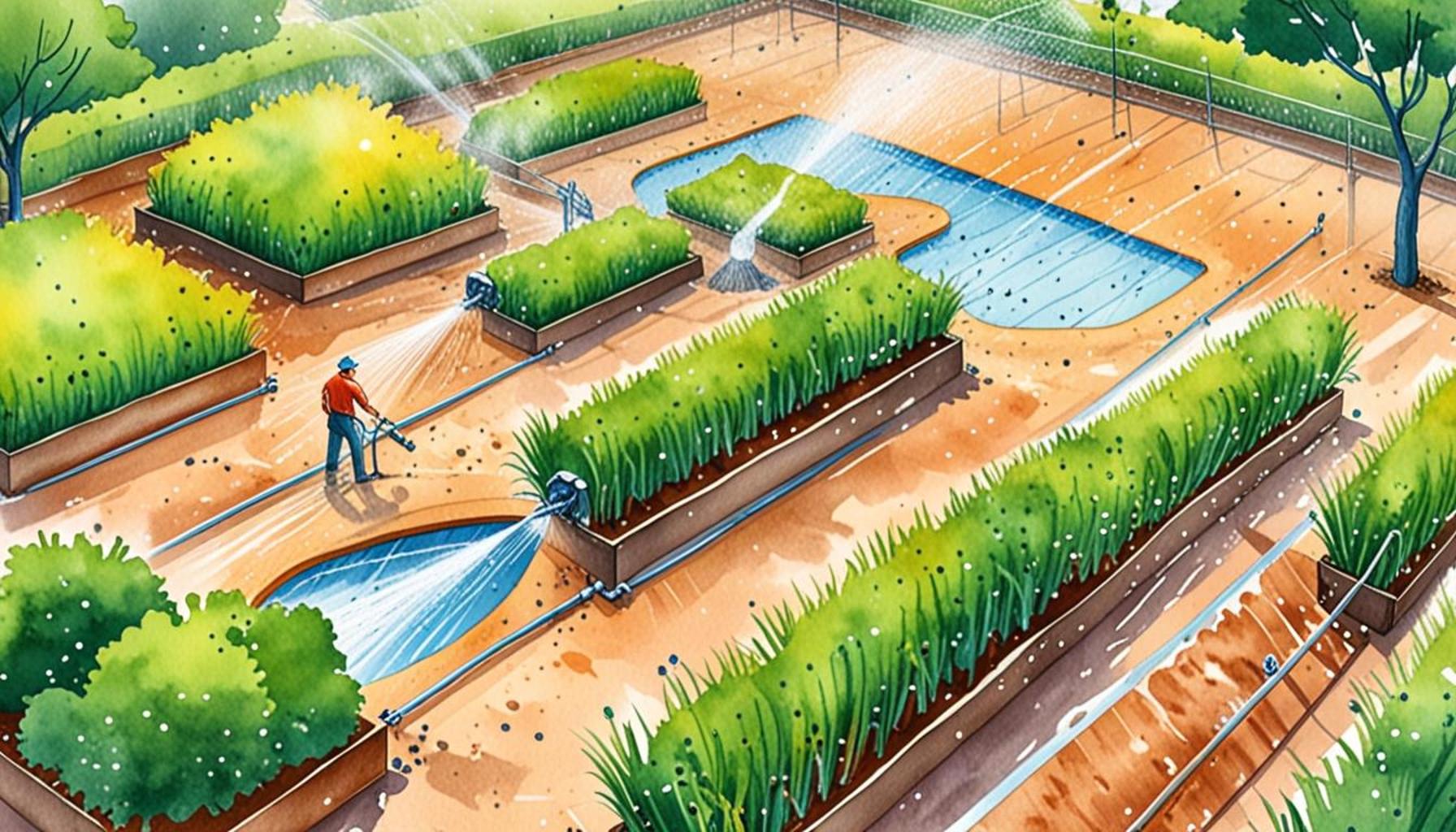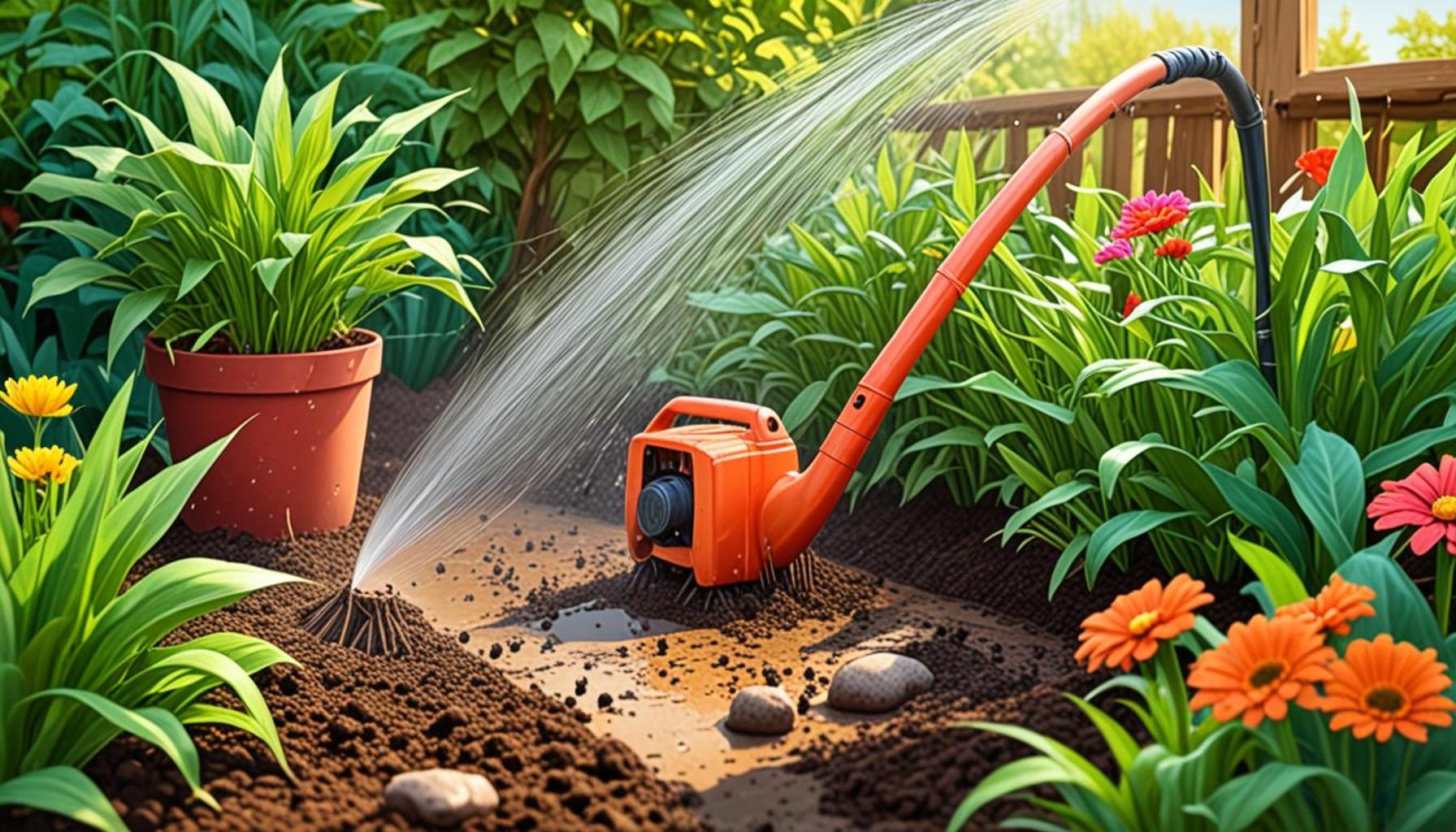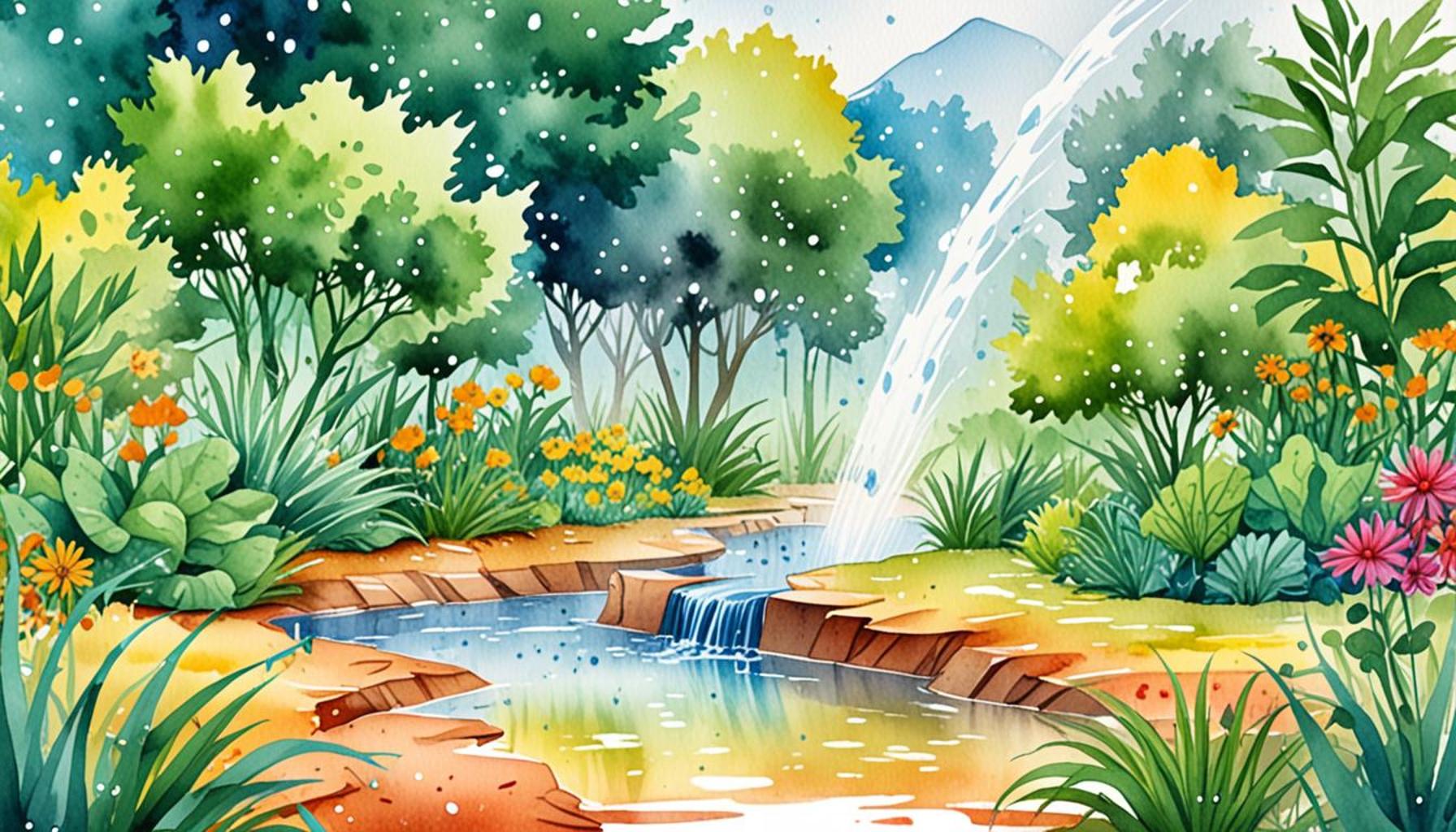The importance of drainage in plant cultivation: how to avoid excess water
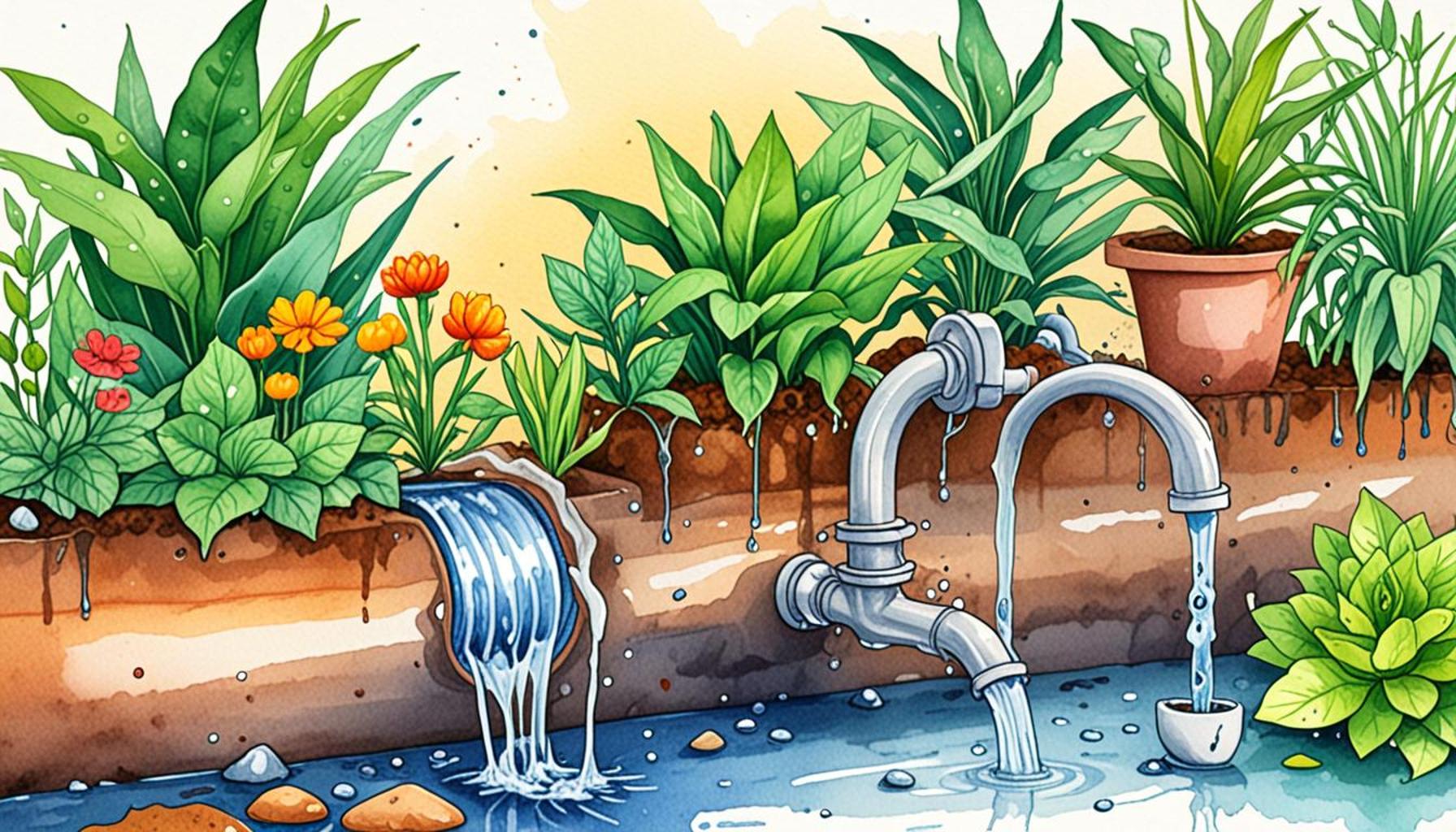
The Importance of Proper Drainage in Gardening and Agriculture
Effective drainage plays a pivotal role in the health of plants, acting as a safeguard against a myriad of problems that can devastate gardens and crops. When water accumulates rather than draining away, it can create a hostile environment for plant roots. This can be especially problematic in certain regions of the United States, where heavy rainfall or saturated soil conditions may be more prevalent. Let’s delve deeper into the implications of poor drainage and explore actionable solutions.
Prevents Root Rot: This is one of the most critical aspects of proper drainage. When soil becomes waterlogged, it creates an ideal habitat for harmful pathogens, such as the fungi that cause root rot. Symptoms include yellowing leaves, stunted growth, and wilting. Many gardeners in states like Florida, known for its humid subtropical climate, often battle root rot during the rainy season. To combat this, ensuring that the soil composition allows for adequate drainage is essential.
Enhances Nutrient Uptake: Plants rely on nutrient-rich soil for their development. However, excess water can wash away vital minerals and nutrients, leaving plants struggling to absorb what they need. It’s not uncommon for gardeners to notice a decline in plant health when heavy rains leach away fertilization efforts. For instance, in the Midwest, where agriculture relies on fertile soil, implementing drainage strategies is vital for maintaining crop yields.
Reduces Pest Infestation: Stagnant water is a magnet for pests such as mosquitoes and snails, which can thrive in damp environments and cause significant harm to plants. By ensuring that water drains properly and doesn’t pool, gardeners can mitigate pest problems, leading to healthier plants and reduced reliance on chemical insecticides.
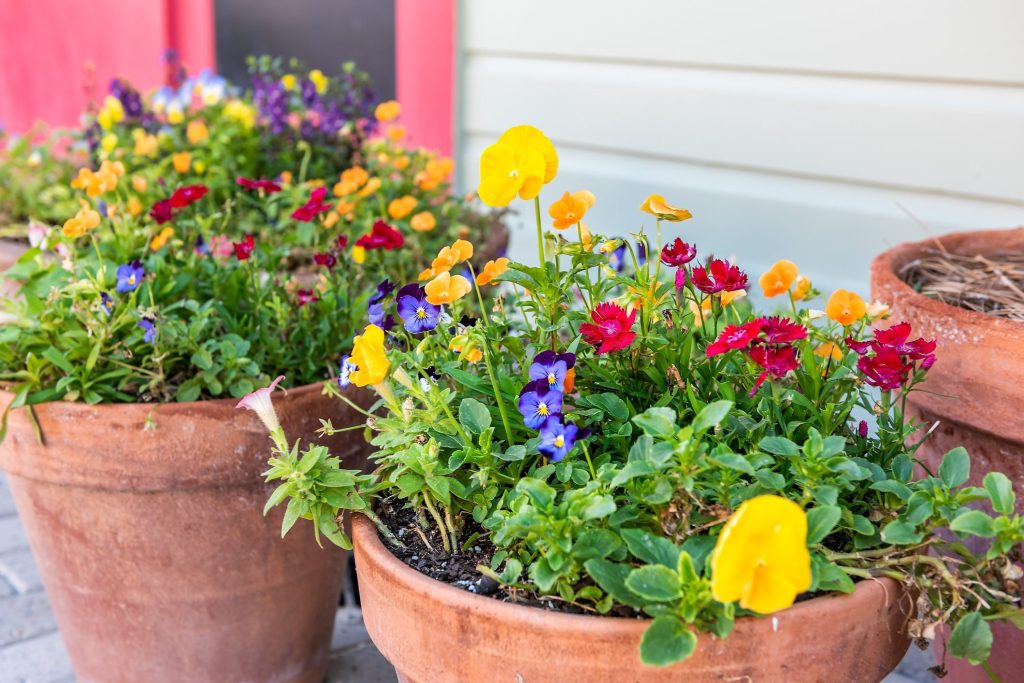
Identifying the signs of poor drainage is the first step toward promoting plant health. Here are strategies for managing excess water effectively:
- Soil Composition: Opt for well-draining soil mixes that include organic matter like compost. These materials improve aeration and retain moisture without becoming soggy.
- Raised Beds: Creating raised garden beds is an excellent way to enhance drainage, particularly in areas with heavy clay soil. This method allows water to drain away from plant roots more quickly, reducing the likelihood of waterlogging.
- Drainage Systems: For larger gardening projects or agricultural fields, installing systems like French drains, which capture and redirect excess water, can be crucial. Perforated pipes integrated into the landscape will facilitate better drainage and enhance crop resilience.
In summary, understanding the role of drainage is vital for any plant cultivation endeavor. Effective drainage strategies foster healthier plants, improve yields, and ultimately contribute to the sustainability of gardening and farming practices. By being aware of the challenges posed by excess water and employing practical solutions, gardeners can ensure a thriving environment for their plants to flourish. Whether you are a hobbyist or a commercial grower, prioritizing drainage can lead to long-lasting benefits in your green spaces.
DISCOVER MORE: Click here to learn how to simplify your plant care
Understanding the Risks of Poor Drainage
Effective drainage is not just an agronomic consideration—it’s a fundamental aspect of successful gardening that can determine the very vitality of plants. Unchecked moisture in the soil can lead to a variety of issues, often culminating in significant losses for growers and gardeners alike. One critical risk associated with poor drainage is the suffocation of plant roots. When soil remains oversaturated, it deprives roots of the oxygen they require to thrive. In many parts of the United States, such as the Pacific Northwest, where rainfall can be abundant, this problem is particularly prevalent, often resulting in reduced growth or plant death.
Water Retention Issues: Maintaining a proper balance of moisture in the soil is crucial. While plants need water, too much can lead to water retention problems, which can have far-reaching effects. For instance, if the soil retains excess moisture, it can slow down or prevent the uptake of crucial nutrients like nitrogen and potassium. Gardeners in regions with heavy clay soils frequently struggle with this dilemma, as these soils naturally hold water rather than allowing it to drain away. The result is often a grassy garden with stunted plants that fail to reach their full potential.
Impact on Soil Structure: Furthermore, prolonged waterlogging can disrupt the delicate soil structure that is vital for healthy root development. Excess water can lead to soil erosion, compaction, and the washing away of organic materials that are critical for enriching the garden’s ecosystem. This degradation of soil quality can take years to reverse, impacting not only current plants but future cultivation efforts. In areas like the Midwestern United States, known for its rich farmland, maintaining soil structure is essential for sustaining crop productivity over generations.
Promoting Root Health: Aside from the immediate consequences of poor drainage, the long-term health of plants is jeopardized. Roots, once compromised, can become susceptible to diseases and pests that flourish in these damp conditions. As highlighted in agricultural studies, waterlogged conditions can lead to the proliferation of root pathogens, prompting an agricultural emergency for growers who depend on healthy crops. For example, Soybean Sudden Death Syndrome, prevalent in humid areas, exemplifies the stark consequences of uncontrolled soil moisture.
To effectively combat these challenges, gardeners and farmers can adopt a variety of practical strategies to prevent excess water from becoming a hindrance:
- Soil Amendments: Incorporating amendments, such as perlite or sand, can improve soil drainage and promote better aeration, ensuring that roots have access to both water and oxygen.
- Strategic Planting Layouts: Designing the garden layout by grouping plants with similar water needs together can help in managing watering schedules and drainage effectively.
- Monitoring Weather Patterns: Keeping an eye on weather trends can aid in anticipating periods of heavy rain, allowing growers to take preventative measures in advance.
In summary, understanding the risks associated with poor drainage is vital for any gardener looking to cultivate healthy plants. By prioritizing effective drainage solutions, gardeners can unlock the potential of their growing spaces, transforming potential pitfalls into blooming successes.
The Importance of Drainage in Plant Cultivation: How to Avoid Excess Water
Proper drainage is a critical factor in successful plant cultivation, as it directly influences the health and growth of plants. Insufficient drainage can lead to waterlogged soil, which is detrimental to root development and overall plant vitality. In this section, we will delve deeper into the repercussions of poor drainage and explore effective measures to safeguard against excess water accumulation.Excess water in the soil can create an aquatic environment unsuitable for most plants. When the soil becomes saturated, it limits the availability of oxygen to the roots, leading to conditions such as root rot. This fungal disease can devastate plants, making them prone to secondary infections. Additionally, many nutrients are less available in overly wet soils, impairing plant growth and leading to deficiencies.To prevent waterlogging, one must employ effective drainage strategies. These may include the use of raised garden beds, which facilitate water runoff and encourage healthy root systems. Another viable option is the installation of drainage tiles or gravel beds, which serve to redirect excess water away from the root zones. Moreover, regularly aerating the soil can enhance drainage capabilities, allowing more air to reach the roots while facilitating the expulsion of excess moisture.It is important to monitor rainfall and adjust irrigation practices accordingly. Utilizing tools like moisture meters can help in determining the soil’s wetness. Adopting mulching techniques can also regulate soil moisture levels, further promoting plant health. In summary, prioritizing effective drainage solutions not only enhances plant growth but also prevents a host of complications associated with excess water. By implementing the right strategies and maintaining vigilant oversight over moisture levels, cultivators can ensure that their plants thrive and flourish, creating a thriving garden or landscape.
| Category | Details |
|---|---|
| Waterlogged Soils | Can lead to root rot and fungal diseases, harming plant health. |
| Drainage Solutions | Use raised beds, drainage tiles, or gravel to enhance water flow. |
DISCOVER MORE: Click here for essential tips
Implementing Effective Drainage Solutions
To mitigate the risks associated with poor drainage, it is essential for both amateur and professional gardeners to understand the various strategies available. Implementing effective drainage solutions can not only prevent excess water but also enhance the overall health and productivity of plant life. As the demand for sustainable practices in agriculture grows, employing a multifaceted approach to drainage becomes increasingly important.
Building Raised Beds: One of the most effective methods to enhance drainage is by incorporating raised garden beds. By elevating planting areas above ground level, water can naturally flow away from the root zone, reducing the risk of waterlogging. This technique is especially useful in regions prone to heavy rainfall or areas with poor baseline drainage. Raised beds allow for better control over soil composition, ensuring the right mix of drainage-friendly materials and preventing the buildup of harmful saturation.
Utilizing Drainage Systems: A more advanced approach involves the installation of drainage systems, such as French drains or gravel pathways. French drains, which consist of a trench filled with gravel and a perforated pipe, redirect excess water away from susceptible areas. This method is particularly valuable in larger farming operations, where soil saturation can affect crop yields substantially. Utilizing a combination of surface and subsurface drainage strategies tailored to regional climates can significantly improve plant resilience.
Incorporating Drought-Resistant Plants: It is also worth considering the integration of drought-resistant or native plant species into the garden. These plants are often more adapted to local soil and climatic conditions. For instance, in arid regions of the southwestern United States, incorporating succulents and xerophytes can mitigate the adverse effects of excess water. These plants not only thrive in less ideal conditions but can also help improve soil structure over time, fostering better drainage for surrounding vegetation.
Rain Gardens and Bioswales: Rain gardens and bioswales represent innovative solutions for managing stormwater runoff. Designed to temporarily hold water and allow for its gradual infiltration into the ground, these features both beautify landscapes and serve critical ecological purposes. By incorporating native plants that can thrive in intermittently soggy conditions, these systems can filter pollutants and reduce soil erosion, making them an eco-friendly choice for communities and individual gardeners alike.
Regular Soil Testing: Moreover, regular soil testing can provide valuable insights into drainage capabilities. Understanding soil texture, pH levels, and nutrient content can help gardeners make informed decisions about which amendments to use, thereby enhancing the soil’s natural drainage properties. Soil tests can flag issues that might not be immediately evident, such as compacted layers that could obstruct the downward flow of water. This data-driven approach is essential, particularly for larger agricultural operations seeking to optimize yield.
Creating a Comprehensive Water Management Plan: Lastly, formulating a comprehensive water management plan is crucial for any cultivation effort. This plan should encompass strategies for both excess rainfall and extended dry spells. By embracing techniques such as rainwater harvesting, drip irrigation, and moisture monitoring tools, gardeners and farmers can wield greater control over their watering practices, ensuring plants receive just the right amount of water.
Through these varied approaches, from simple amendments to advanced drainage systems, plant cultivators can dramatically enhance their gardens’ vitality. Understanding and implementing effective drainage solutions not only protects against the disastrous effects of water excess but also cultivates a thriving, resilient ecosystem.
DIVE DEEPER: Click here to learn more about effective mulching techniques
Final Thoughts on Drainage in Plant Cultivation
In the complex world of plant cultivation, the significance of effective drainage cannot be overstated. As we’ve explored, excess water poses a severe threat to plant health, leading to issues such as root rot, nutrient deficiencies, and decreased crop yield. By employing a variety of innovative strategies—ranging from raised garden beds to advanced drainage systems and rain gardens—gardeners can create a thriving environment that nourishes rather than hinders plant growth.
Understanding the natural capabilities of soil through regular testing empowers cultivators to make informed choices that enhance drainage and overall soil health. Moreover, integrating drought-resistant plants into landscapes not only serves as a form of ecological resilience but also improves the long-term sustainability of gardens.
As we move forward in an era where sustainable agriculture is paramount, the need for a comprehensive water management plan becomes increasingly essential. Emphasizing practices such as rainwater harvesting, proactive drainage solutions, and moisture monitoring can ensure that plants receive just the right amount of water, regardless of weather variations.
Ultimately, the journey of cultivating healthy and robust plants begins with understanding and addressing water-related challenges. By recognizing the importance of drainage in plant cultivation and adopting practical solutions, we not only safeguard our gardens but also contribute to a more sustainable ecosystem capable of thriving in the face of ever-changing environmental conditions.
